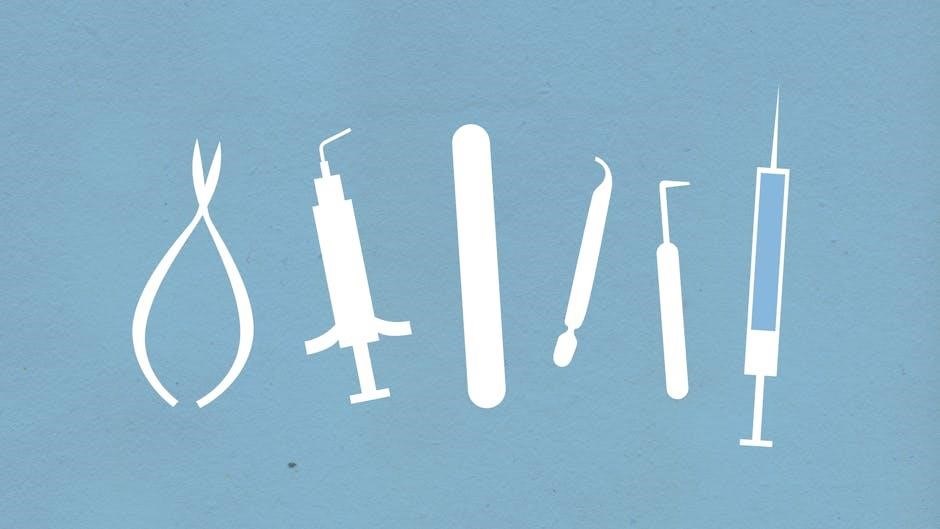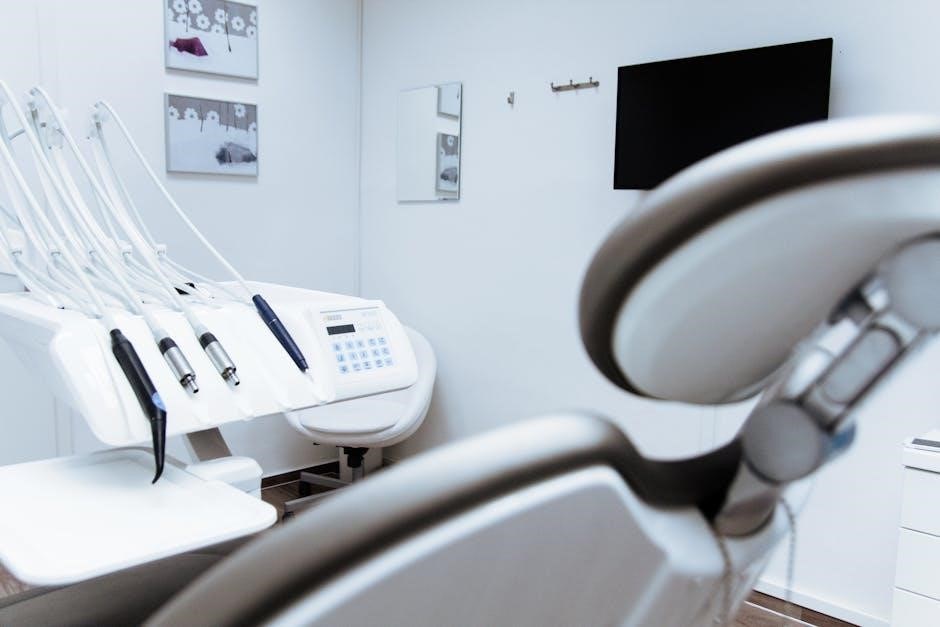
standards and rules always.
Key OSHA Standards for Dental Offices
OSHA standards for dental offices are comprehensive and cover various aspects of workplace safety. The Bloodborne Pathogen Standard is one of the key standards, which requires dental offices to implement measures to prevent the transmission of bloodborne pathogens. The Hazard Communication Standard is another important standard, which mandates that dental offices provide information about hazardous chemicals used in the workplace. Additionally, guidelines for Personal Protective Equipment (PPE) are also crucial, as they require dental offices to provide appropriate PPE to employees to prevent exposure to infectious diseases. These standards are critical for maintaining a safe working environment in dental offices and protecting the health and well-being of dental personnel. By following these standards, dental offices can minimize the risk of workplace injuries and illnesses, and ensure compliance with OSHA regulations. The standards are regularly updated, and dental offices must stay informed about the latest requirements to ensure ongoing compliance.

OSHA Compliance for Dental Offices
Compliance involves following OSHA regulations, using
specific
guidelines and standards to ensure workplace safety always.
Importance of Adhering to OSHA Guidelines
Adhering to OSHA guidelines is crucial for dental offices as it helps prevent workplace injuries and illnesses, ensuring a safe environment for employees and patients. The Occupational Safety and Health Administration provides regulations and standards to follow, using specific guidelines and rules to minimize risks. By complying with these guidelines, dental offices can reduce the likelihood of accidents, such as exposure to bloodborne pathogens, and create a healthier workplace. This, in turn, can lead to increased productivity, reduced workers’ compensation claims, and a positive reputation. Furthermore, following OSHA guidelines demonstrates a commitment to the well-being of employees and patients, which is essential for building trust and loyalty. Overall, adhering to OSHA guidelines is essential for dental offices to maintain a safe and healthy work environment, and it is the responsibility of employers to ensure compliance with these regulations. Using OSHA guidelines helps dental offices to stay compliant and avoid potential penalties.

Legal Obligations of Dental Offices
Dental offices have legal obligations to comply with OSHA regulations, using
- specific
laws and rules to ensure workplace safety always and properly.
Consequences of Non-Compliance with OSHA Standards
Non-compliance with OSHA standards can have severe consequences for dental offices, including fines, penalties, and damage to their reputation. The Occupational Safety and Health Administration can impose significant fines on dental offices that fail to comply with OSHA regulations. According to the OSHA manual, non-compliance can also lead to legal action, including lawsuits and settlements. Furthermore, non-compliance can result in harm to employees, patients, and the community at large. Dental offices that fail to comply with OSHA standards may also face loss of licenses, certifications, and accreditation. In addition, non-compliance can lead to increased workers’ compensation claims, higher insurance premiums, and decreased employee morale. Overall, the consequences of non-compliance with OSHA standards can be devastating for dental offices, emphasizing the importance of adhering to these regulations to ensure a safe and healthy work environment. By complying with OSHA standards, dental offices can avoid these consequences and provide a safe and healthy work environment for their employees and patients. Using
- specific
guidelines and rules is essential to avoid non-compliance.

OSHA Requirements for Dental Offices
OSHA requirements for dental offices include guidelines for safety protocols and procedures to ensure a healthy work environment always.
Creating a Safe and Healthy Workplace
Creating a safe and healthy workplace is crucial for the well-being of dental office employees and patients. The Occupational Safety and Health Administration provides guidelines for dental offices to follow, including proper use of personal protective equipment and protocols for handling hazardous materials. A safe workplace can be achieved by implementing standard operating procedures and providing regular training to employees. This includes training on emergency procedures, such as fire evacuation and first aid; By following these guidelines, dental offices can minimize the risk of accidents and ensure a healthy work environment. The use of safety data sheets and labels on hazardous materials is also essential for a safe workplace. Additionally, dental offices should have a plan in place for managing waste and preventing the spread of infectious diseases. By taking these steps, dental offices can create a safe and healthy workplace for everyone. Regular inspections and audits can help identify areas for improvement and ensure compliance with OSHA regulations.

OSHA Compliance Checklist for Dental Offices
The OSHA compliance checklist for dental offices is a comprehensive tool used to ensure that dental offices are meeting the required standards for a safe working environment. This checklist includes items such as proper training for employees, use of personal protective equipment, and protocols for handling hazardous materials. The checklist also covers emergency procedures, such as fire evacuation and first aid, as well as proper disposal of waste and management of infectious diseases. By using this checklist, dental offices can identify areas where they may be lacking in compliance and take steps to correct these issues. The checklist is typically divided into sections, each covering a specific area of compliance, such as employee training or hazard communication. Dental offices can use this checklist to conduct regular self-audits and ensure that they are meeting all of the necessary OSHA standards. Regular use of the checklist can help prevent accidents and ensure a safe working environment for employees and patients. OSHA provides guidelines for creating a customized checklist tailored to the specific needs of each dental office.